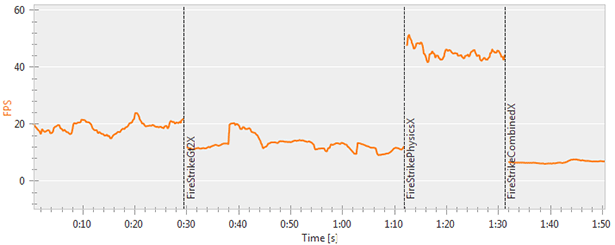NVIDIA GeForce GTX 770 Review With Gigabyte & MSI
|
|
|
|
|
Fire Strike has two benchmark modes: Normal mode runs in 1920x1080, while Extreme mode targets 2560x1440. GPU target frame buffer utilization for normal mode is 1GB and the benchmark uses tessellation, ambient occlusion, volume illumination, and a medium-quality depth of field filter. The more taxing Extreme mode targets 1.5GB of frame buffer memory and increases detail levels across the board. Extreme mode is explicitly designed for CrossFire / SLI systems. GT 1 focuses on geometry and illumination, with over 100 shadow casting spot lights, 140 non-shadow casting point lights, and 3.9 million vertices calculated for tessellation per frame. Only 80 million pixels are processed per frame. GT2 emphasizes particles and GPU simulations. Tessellation volume is reduced to 2.6 million vertices, but the number of pixels processed per frame rises to 170 million. |

Reference GeForce GTX 770 3DMark Fire Strike Details


The grouping in 3DMark Fire Strike looks very much like Unigine Heaven's on the previous page, with one exception. This time around, the Gigabyte card finished ever so slightly ahead of MSI's offering. Considering their specifications, this shouldn't happen, but keep in mind that GPU Boost 2.0 is dynamic and may result in higher peak clocks for short bursts due to more favorable environmental conditions, which is probably what happened here.
We should also point out that the GeForce GTX 770 SLI configurations showed good scaling, and finished right in between the Radeon HD 7970 CrossFire and GeForce GTX 780 SLI setups.








